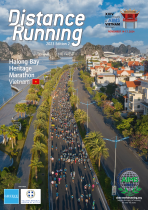Opinion
04 April 2017, 7am
Upping their chances
As a child I grew into athletics — and then distance running — in the wake of Roger Bannister’s achievement of running 3 minutes 59.7 seconds for the mile or “breaking the four-minute-mile barrier”.
It was an event that was invested with huge significance at the time and long thereafter. Other “significant number” barriers have been broken since — 10 seconds for 100m (Jim Hines, 1968), 20 seconds for 200m (Tommie Smith, 1968) without attracting much comment but it seems people have eyed a new prize: the sub 2-hour marathon.
The first person to run under an hour for a half marathon was Moses Tanui in 1993, at a time when the World record for the Marathon stood at 2:06:50 (Belayneh Dinsamo, 1988). The half marathon record has come down by 84 seconds since then, and the Marathon record by 233 seconds. Combined with the regularity with which the Marathon word record has been broken — five times in the last 10 years — it is no wonder the chances of a sub 2-hour marathon are being talked up.
Even though 178 more seconds have to be lopped off the Marathon time to take it below two hours the chatter about doing this has intensified. Everyone had thought that to achieve that time would take several years at minimum and likely over a decade. But late last year Nike launched a “2 hour project” aimed at one of their own sponsored athletes doing it within a matter of months.
Of these they have selected Eliud Kipchoge, Lelissa Desisa and Zersenay Tadesse. These three, particularly Kipchoge, will have sacrificed the possibility of big paydays at one of the coming Spring marathons which gives some indication of the amount of money Nike are investing. But might success for the project be defined differently to the declared aim?
It fits with the habitual ‘in your face’ sloganising of the athletic shoe companies (“Just do it”; “Impossible is nothing”). The 2 hour project is interesting as an example of how a company like Nike aspire to fill the ‘conversational’ or marketing space — and that this is thought of as success in its own right, never mind the outcome in terms of the times posted (if any).
Others think differently: “[W]hen sports science promises and then under-delivers it actually hurts us in the long run,” wrote sports scientist Ross Tucker. But sports science and sports marketing goals can often be divergent.
What has been announced — or surmised — about the logistics of the project so far is that the named runners will compete head-to-head, although presumably in the company of pacemakers, on a closed, purpose-designed course that will observe world record criteria. This means that the elevation of the finish will be not more than 42m below that of the start or more than 21.1km distant from it in a direct line. It is likely that to maintain a literally level field of play it will be run on a lap the shape of that in a stadium but much enlarged in size. The entire course could be conducted on the lap or also taking advantage of a separate extended finish section which drops an allowable amount — which might make for a faster final few kilometres than otherwise possible, especially if it drops off in a direction where runners would also benefit from a prevailing wind.
The date has not been announced beyond indicating it would be ‘spring’ — presumably in either Europe or North America — with Europe requiring less adaptation to time zone changes by the runners. If the attempt has not been staged by the time of publication of this edition of Distance Running then it would have to happen within a month (by mid-May).
While the attempt will be on a record-eligible course it is not clear whether other assistance may be afforded the runners such that it rules any time recorded out of consideration as an official world record. That kind of assistance could be the use of ‘relays’ of pacemakers (who therefore would not be considered as participating in the race) or a vehicular ‘shield’ to protect runners from headwind.
To engineer ‘drafting’ in this way would be reminiscent of ’mile-a-minute’ Murphy who achieved that feat on a bicycle way back in 1899 but completely shielded from wind resistance by a train which encased him. The catchy soubriquet seems to have made the first time this was matched without such protection into an insignificant event: it’s hard to find in recorded cycling history — perhaps it still hasn’t happened.
Yet what are the chances, even with all assistance short of brazen cheating, of any of the three selected athletes running under two hours? I’ll stick my neck out and say zero. Eliud Kipchoge is the obvious front runner and he will have to fulfil that role if the early pace is to give any chance of reaching the target time. They would have to go through 10km in something like 28:25 and the half marathon (of course) in an hour. So far so easy, but when one or both of the others drop out — as common sense dictates they will — can the frontrunner keep lapping as if someone is right on his shoulder? That’s why world records are still more likely to be set in conventional competition than tailor-made time trials.







